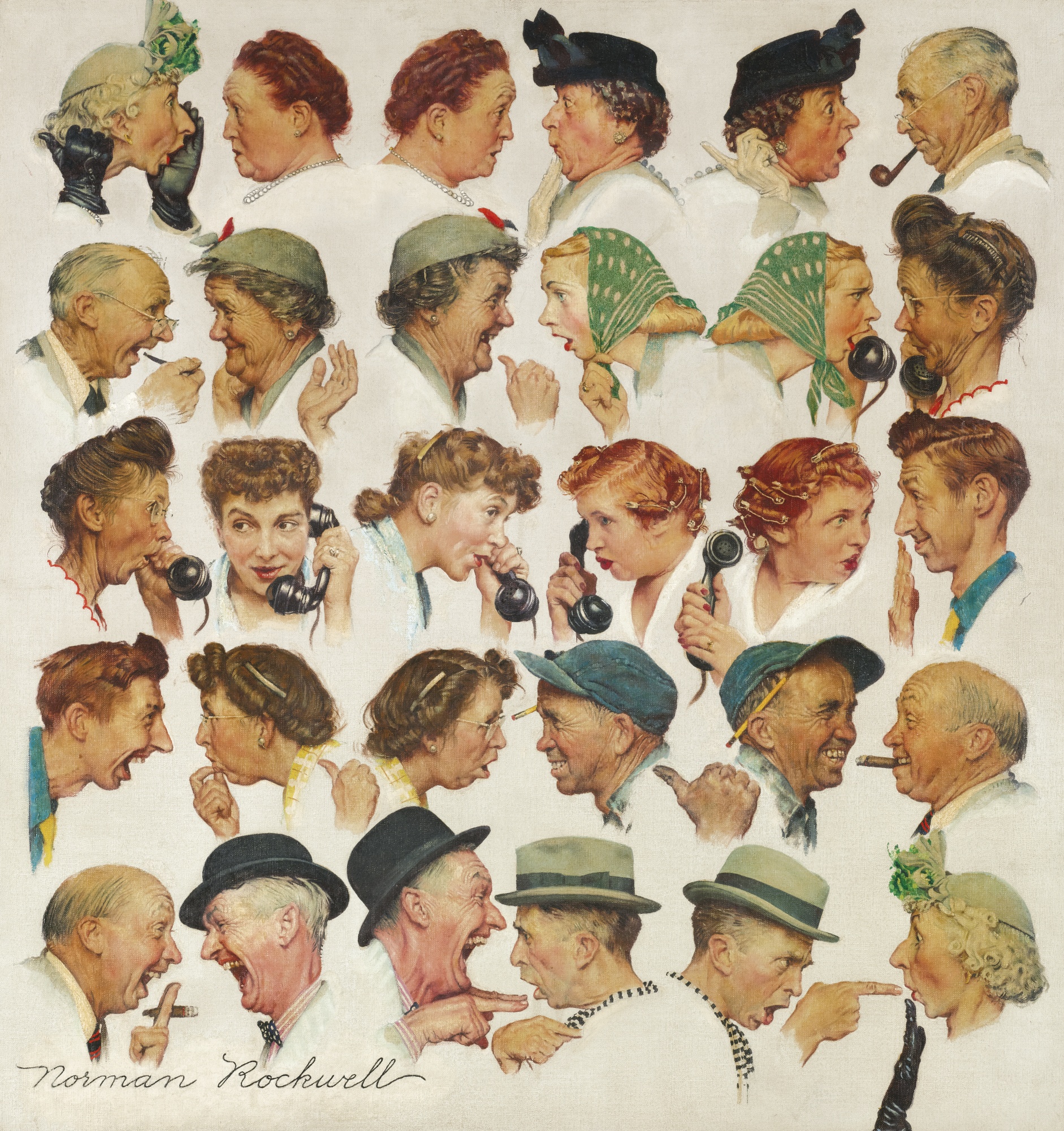GOSSIP (GRADES K-8)
Build writing skills and language skills as you speculate on what the characters in Rockwell’s The Gossips are talking about.
Rockwell had the idea for The Gossips for 20 years but couldn’t come up with the ending. Then he had the idea to picture himself as the subject of the gossips’ circle; suddenly he knew what to draw. He used his neighbors in Arlington, Vermont as the other figures in the painting. Thousands of letters were sent to “The Saturday Evening Post” asking what the gossip was all about, but Rockwell never gave it away.
GOALS
- Build narrative writing skills.
- Build descriptive language skills.
- Engage in collaborative conversations
- Explore strategies for making a story really exciting.
MATERIALS
- A printed or digital copy of “The Gossip”
- Writing paper
- A digital camera (optional)

The Gossips, Norman Rockwell. 1948.
©1948 SEPS: Licensed by Curtis Publishing, Indianapolis, IN
[One line activity for teaser: What’s the gossip? Whisper your thoughts into someone’s ear and tell them to “shhhhh…pass it on”]
ACTIVITY
Observe
- Look at the painting together. And ask:
- What is going on in this picture?
- Who are the characters in this picture? Do they know each other? How are they connected to one another? What are they doing?
- What do the characters think or feel about the thing they are talking about? How can you tell?
Explore
- Discuss how gossip works. You might explain that one person tells another person about something that happened. Then that person tells someone else.
- Explain that with gossip often the story changes from one teller to the next. People add in their own details to make things more exciting. If you have studied “Tall Tales” you might use them as examples of how a story can grow and grow and get more dramatic.
- Have students stand in a line. Join them at the head of the line. Begin an everyday story. Make it fairly basic, for example. I was walking though the lunch room with my trey and I spilled my milk.
- Challenge the person next to you in line to repeat the story, this time making it a little bit more exciting.
- Keep passing the story. Encourage each student to add his or her own details and twists.
- When you have finished, talk as a group about how the story changed.
- With older students: return to the painting. Have one student be the first gossiper and write the line of gossip that she thinks the woman is sharing.
- Have that student pass the paper to another child in the classroom. Have the student add the next line of gossip. Continue until you have written all 15 lines of gossip.
EXTENSIONS
Try these activities to go even farther with your explorations.
Create
- Tell more gossip and have students act out your words as you tell them. Add in lots of detail and exciting twists and turns and draw student’s attention to the fact that the story gets more and more fun to act out the more detail and action you add in. You may wish to choose students to be the storytellers as well.
Reflect
- As a group discuss the following questions:
- How did our stories change from one person to the next?
- What details made the stories most fun and interesting?
- What are some ways we made our stories more and more exciting?
- What are some writing strategies that we can use to make a story really exciting?

